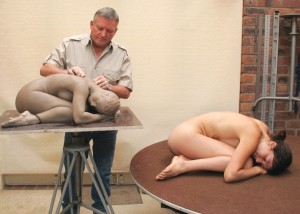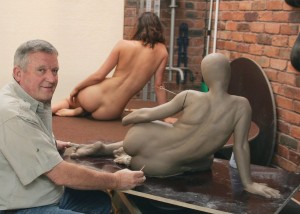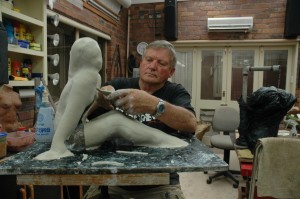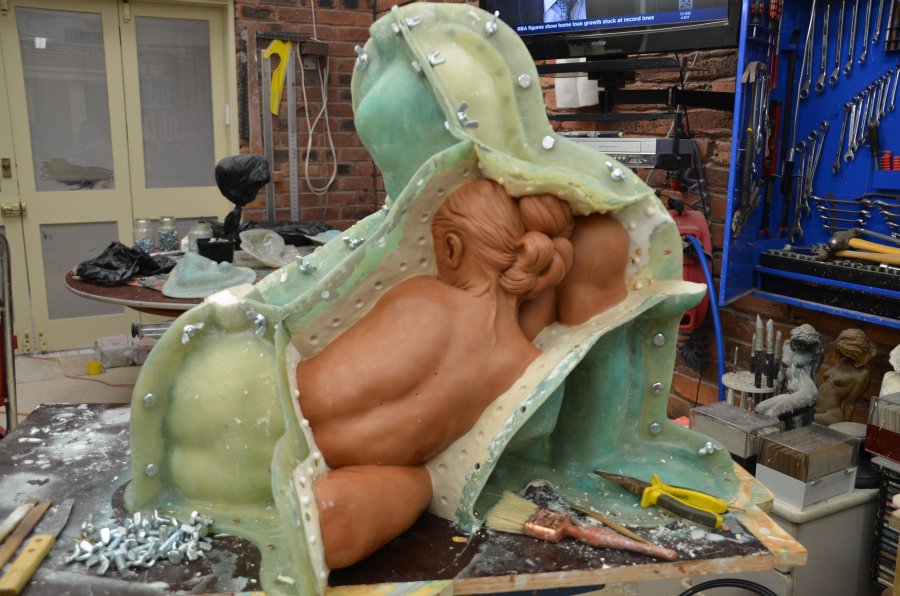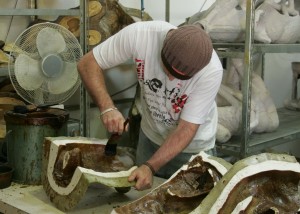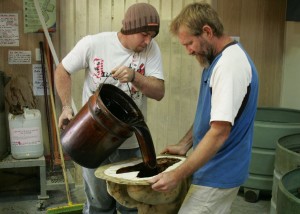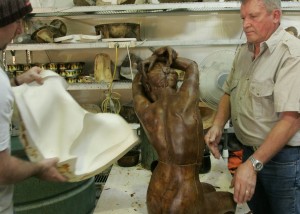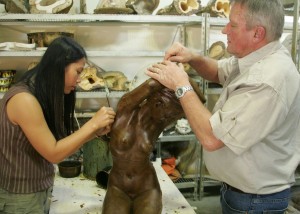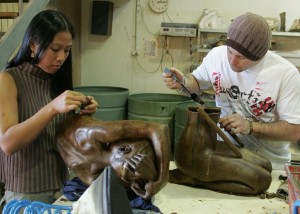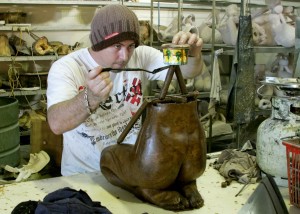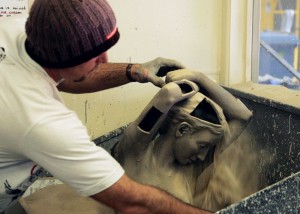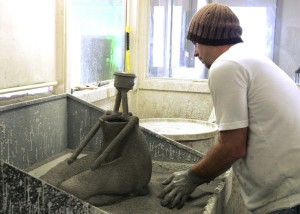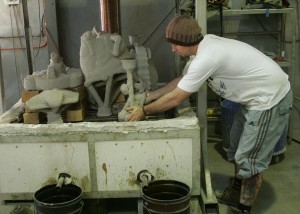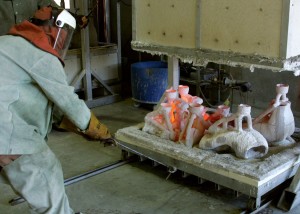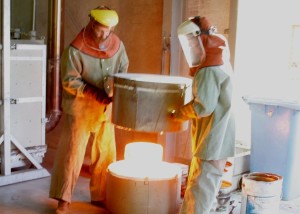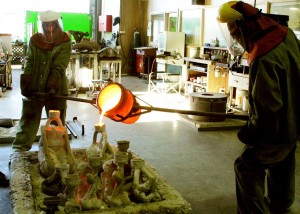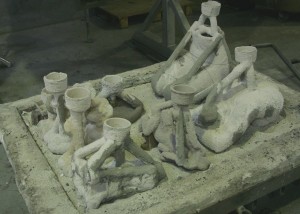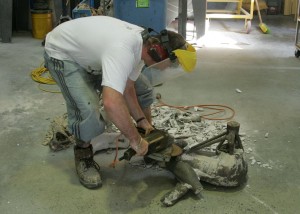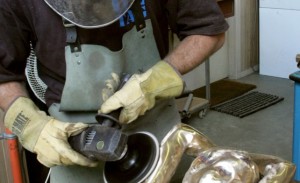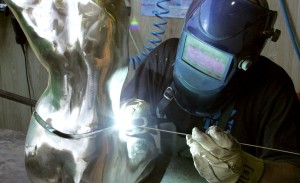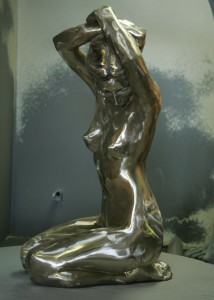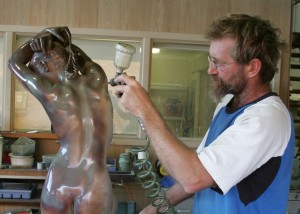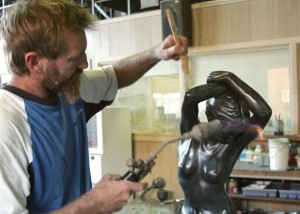
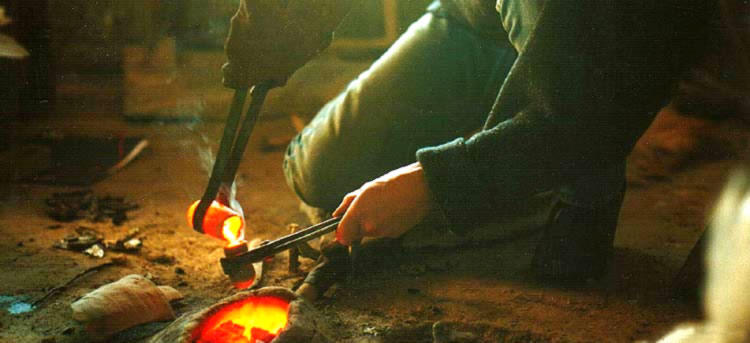
Bronze Age technology and the development of metallurgy began in approximately 3500 BC and extended through 800 BC. Metal-working developed in the Near East and China with late Neolithic peoples using a few metal tools and ornaments. These were mostly of copper, however, gold, silver and lead were also known. Ancient classical Greeks inherited from Mycenae and the Late Minoan culture the knowledge of bronze casting,
The Romans continued the tradition of casting artwork in bronze. Renaissance artists of the 15th and 16th century resurrected this art and craft and perfected the method of casting bronze, now called lost wax or cire perdue. This is the primary method of casting at Bronz-Worx in Ballina. Using the Lost wax method, this foundry is continuing a 6000 year old tradition of art bronze casting while utilizing twentieth century advances in technology applied to the bronze crafter’s art.
Step 1 The Original Work of Art & Enlargement / Reduction Process
The artist creates an original work to be cast. This work may be any material, however, wood, clay, stone or other metals are preferred by most artists. An armature is used to support the original work and the enlargement. A proportional pointing system assists the artisan enlarging or reducing the work to maintain the accuracy of reproduction.
Step 2 Mold Making Process
A silicone rubber material is sprayed, poured or brushed over the original work of art to form a perfect imprint of the original. Plastic or metal separators, called shims, are placed along predetermined seam lines. A set of keys are added in order to permit the accurate reassembly of the mold once it is opened. Plaster is then placed over the rubber to create a hard mold which will hold the rubber in place once the original work is removed.
After the plaster has set, the seams are forced open and the rubber seams are cut, allowing the mold to be peeled from. the original. Holes are drilled along the plaster seam line to allow for a system of bolts and wing nuts to be installed, This holds the mold together during the wax phase of the process.
Step 3 Wax
When the Mother Mold is completed, wax is either brushed or poured into the rubber mold. Several layers or coats of wax are applied. The result is a perfect wax reproduction of the original. The thickness of the wax is approximately 3l16th of an inch. It is this wax figure that will be used to create the second mold into which the bronze will be poured. the rubber mold is used each time the artist wants to create another copy of the work. The series, or copies of an original work of art is termed an edition.
Step 4 The Sprue (Gating) System
Wax bars, called sprues are attached to the work. A wax pour cup is added along with sumps and gates. This system of wax channels allows the bronze to flow to the bottom of the mold and circulate upward to the top. Once it reaches the top of the mold small holes or vents allow the bronze to displace gases or air. The system of gates and sprues are incorporated into the second mold.
Step 5 Shell (Dip)
The wax copy of the original work, with the sprue system added, is dipped in a colloidal silica slurry followed by a coating of a dry silica (stucco). Several coats of the silica are added to the wax copy until an all-over coating is achieved. Each coating must dry thoroughly before the next one is added. Once the desired coatings have been achieved this second mold is ready for the burn out.
Step 6 Burn Out
At this point the ceramic shell mold is heated in a kiln to approximately 870 degrees celsius and the wax is flushed out of the mold through vent holes. This part of the process gives the name to the entire production, that is, cire predue or lost wax. Once the wax has evacuated the mold it is now ready to receive the molten bronze.
Step 7 The Pour
The mold is pre-heated while the metal is melted in a furnace. Bronze reaches optimum temperature at approximately 1200 degrees Celsius. The molds are now removed from the kiln and placed in a sand pit. The bronze is poured from the furnace to the ladle from which it will then be poured into the mold.
This is a crucial stage in the process of creating a bronze sculpture. The composition of bronze used is 95% copper. with 1% manganese and 4% silicon. It is called Silicon Bronze.
Step 8 Devestment
Once the molten bronze has had a chance to cool and return to a solid state the work is devested of the ceramic mold. This is usually done with the aid of hammers and pneumatic tools. The gating system is then cut from the work. After removing as much of the shell as possible the sculpture is then sandblasted before it is sent to the metal shop.
Step 9 Metal Work (Welding, Chasing, Fabrication)
Large works are cast in sections and must be welded back together. Smaller works may also have plugs, i.e. sections that were removed and cast separately. The sections are welded together and the seams are chased with grinders. Once the work has been welded and chased it is given a final sandblast to clean the entire surface so that it will accept the patina.
Step 10 Patina / Caring for a Bronze Sculpture
Patination is the process of applying hot chemicals to the surface of the bronze which will oxidize with the metal and change its colour. The patination process also enhances the ability of the sculpture to sustain the elements once it is placed out of doors. Bronze sculptures are waxed after the patina has been added. It is recommended that if a bronze sculpture is kept out of doors it should be cleaned and waxed at least once a year.

